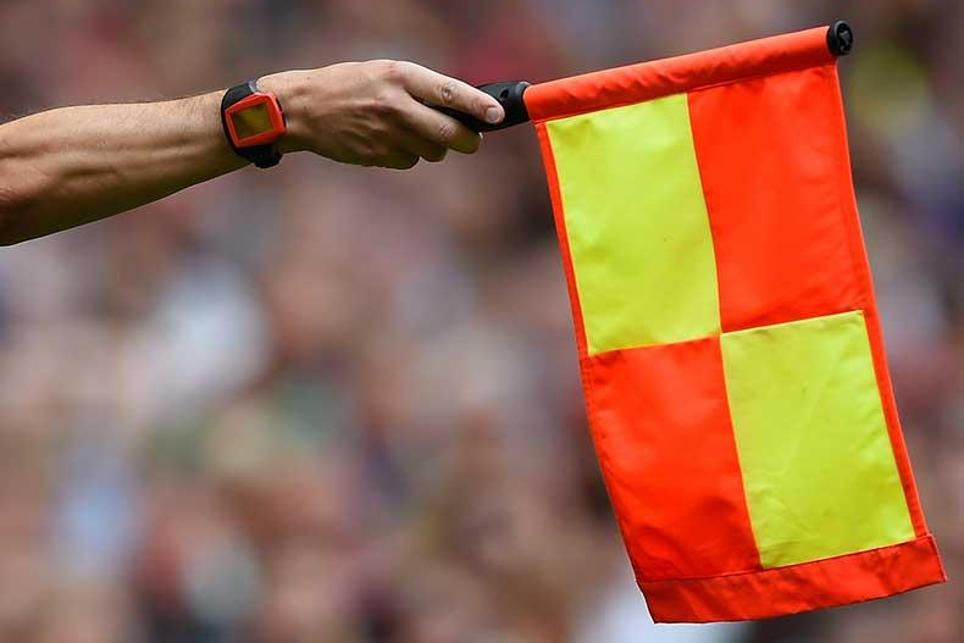Barry Richards buttonholed me one day whilst I was writing his biography. “Tell me,” he demanded, “What’s the point of a leg bye?” Hmm…. When you give the matter some thought, you have to agree….what is the point of a leg bye? “Why should a batsman,” he continued, “get a run for his side when he has made a mistake and missed the ball?” I now got the point. “It should be called a ‘dead ball’ then,” I acceded. That is the thing about Barry. Not only was he the finest batsman I have ever seen, but he also has a deeply thoughtful perspective on the game. “Sometimes, you’ve got to think outside the box, buddie,” he always says.

From one box to another….. Emboldened by my friend’s injunction, I offer up this piece of outside-box thinking. What is the point of the offside rule in football? Apart, that is, from providing a hot topic for fans’ disagreement in the pub and keeping the VAR ‘experts’ in Stockley Park employed? (Where is Stockley Park, by the way? Or is it actually the name of a person, like Paris Hilton or Brooklyn Beckham?) The conundrum came to me at the sad news of Jimmy Greaves’s death. Not many of his goals were 30-yard screamers; he was the ultimate poacher, fox in the box, or ‘goalhanger’, as we used to call them, playing impromptu games of football with a tennis ball in the school yard. There was no offside in those games, a practicable impossibility when playing 19-a side (or 20, or 21, or 22…. it was all very fluid and people would drift in and drift out of the game all the time).
Offside is annoying. It interrupts the game and stifles creativity, providing fewer goal-scoring opportunities. And, let’s face it, goals are what the fans want to see. There is undeniably a skill in setting the offside trap – or ‘setting a high line’, as they say these days. It takes communication, teamwork, timing and many hours on the training pitch to perfect it. But it is bloody irritating, you have to agree, when a sublime piece of skill is negated by a stray armpit hair.
A corner is awarded, let’s say. The big men from the back rumble up towards the penalty area and the pushing and shoving starts in what has immediately become a crowded penalty area. Sometimes, a lone attacker remains upfield, in the centre circle. If that is the case, two defenders - only one would be a grave dereliction of duty - are deputed to mark him. I wonder what the three of them chat about whilst the rest of their team engage in a mass wrestling match so far away…. the state of the economy, how much they’re getting paid, what’s on the menu for post-match merry-making? The point is that you cannot be offside in your own half of the pitch, therefore the line is held on the halfway line. Step over that line and the forward will be offside; that is if the ball happens to be booted his way. Imagine there were no offside rule. The attacker would have the whole pitch in which to wreak potential havoc. He might even be joined by another of his enterprising team-mates, or maybe a third. More space, less congestion, more opportunity for open, flowing football.
And so what if Jimmy Greaves hung around in the penalty area all day? He would need at least two men to mark him, thus opening up large swathes of the pitch when hitherto the game had often been compressed into 20 or 30 yards as both defensive lines pushed up. As one exasperated fan cried out at a match I was watching, “Come and play over here! I paid my money and you’re all playing over there, on a postage stamp.” We all laughed but he had a point. Besides, it is unlikely that the ‘goalhanger’, the lone forward, the man up front, would spend his time asking after the goalie’s wife and kids in the 6-yard box. With no offside restrictions, he could roam the empty spaces in the opposition half, drawing his marker hither and thither, thus opening up the game. As it stands at the moment, eventually one side has to throw off the defensive shackles – though not always – and the game opens up and becomes more of a spectacle. Why not open the game up from the outset? After all, that is what we pay our money for, to watch exciting, attacking football.
The abolition of the offside rule is not as fanciful as you might imagine. Take hockey as an example. The offside rule was scrapped in 1998 and the majority of players, coaches and spectators agree that the game has improved as a result. The field of play became bigger and therefore more options opened up for the attacking side. Furthermore, it did away with those marginal offside decisions that even VAR (in football) has not entirely solved.
Perhaps I would say all this, as a (former) forward. Defenders would no doubt hate the idea. But good players, good teams, imaginative coaches would find a way to defend. I don’t see basketball scores accruing as a result. But it would benefit the playmakers if they had more space. Yes of course a crunching tackle or a well-drilled defensive line or a well-sprung offside-trap are admirable and worthy. But what excites a crowd is skill on the ball. Offside has nothing directly to do with the ball. It stops the game in its tracks.
Counter arguments on a postage stamp, please – over here, not over there.
Comments